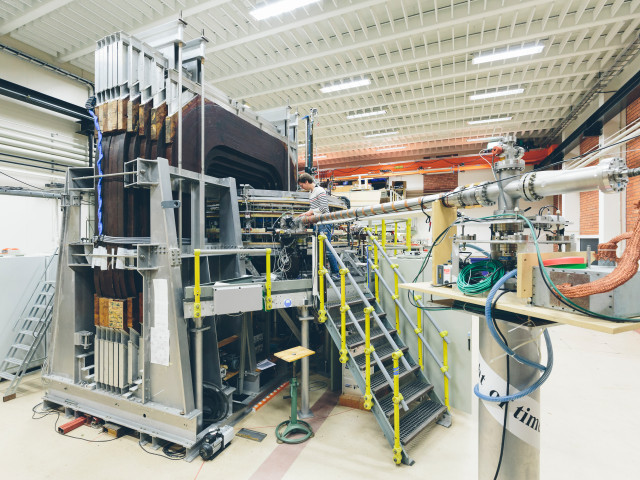- Organic semiconductors and conductors for molecular electronics – concepts and choice of suitable organic molecules
- Charge injection and transport in mesoscopic systems
- Dynamic redox systems: Towards realisation of unimolecular memory
- Device fabrication methods including Langmuir-Blodget Films
- Semiconductor and molecular assembly nanowires
- Making contacts to single molecules
- Biology inspired concepts + Biochemical and quantum computing
- Charge transport in DNA based devices
- Sensing and manipulating molecules – SPM technologies for characterisation and manipulation
- “CMOL”(hybrid semiconductor/nanowire/molecular) devices, circuits and architecture
- Lab-on-chip concepts
- Nanophotonics
SK2755 Molecular Electronics 7.5 credits
This course has been discontinued.
Last planned examination: Autumn 2022
Decision to discontinue this course:
No information inserted
Content and learning outcomes
Course contents
Intended learning outcomes
The course treats the emerging field of molecular electronics from basics. Organic semiconductors will be an important introductory part of this course. The theory and practice of fabricating discrete and integrated molecular electronic devices and their applications in diverse fields will be covered. Means of achieving various electronics functionalities such as memory, logic etc. by the molecules will be treated. Lessons from biological molecular behaviour for molecular electronics will be addressed. Nanophotonics is also introduced as an integral part of molecular electronics.
After the course the student should be able to:
- Understand the physics behind organic semiconductors
- Calculate transport properties in the mesoscopic systemsIdentify the molecules that can be used for different functions in molecular electronics
- Choose a proper method or combined several methods for fabricating a particular componentExploit the behaviour of the biomolecules for molecular electronic
- Gain an introductory knowledge on nanophotonics
Literature and preparations
Specific prerequisites
Bachelor's degree in physics, electrical engineering or equivalent degree
Recommended prerequisites
Basic knowledge in physics, chemistry and materials science.
Equipment
Literature
Published articles and handouts
Examination and completion
If the course is discontinued, students may request to be examined during the following two academic years.
Grading scale
Examination
- TEN1 - Exam, 7.5 credits, grading scale: A, B, C, D, E, FX, F
Based on recommendation from KTH’s coordinator for disabilities, the examiner will decide how to adapt an examination for students with documented disability.
The examiner may apply another examination format when re-examining individual students.
The exam consists of a report, a seminar and home assignments. The student should write at least a5-page report on the seminar topic he/she will hold. The home assignments will be based on all the subjects that are covered in the course (both seminars and lectures). In order to gain grade Fx and above, one should solve all the home assignments besides the report and the seminar. The association of grade with the percentage of marks obtained in the home assignments is as follows: F: < 60 %; Fx: 60 – 70%; E 71– 80%; D 81 - 85%; C: 86 – 90%; B: 91- 95% ; A: 96-100%
Other requirements for final grade
Passed grades in all parts
Opportunity to complete the requirements via supplementary examination
Opportunity to raise an approved grade via renewed examination
Yes
Examiner
Ethical approach
- All members of a group are responsible for the group's work.
- In any assessment, every student shall honestly disclose any help received and sources used.
- In an oral assessment, every student shall be able to present and answer questions about the entire assignment and solution.
Further information
Course room in Canvas
Offered by
Main field of study
Education cycle
Add-on studies
Contact
Supplementary information
Replaces IM2653